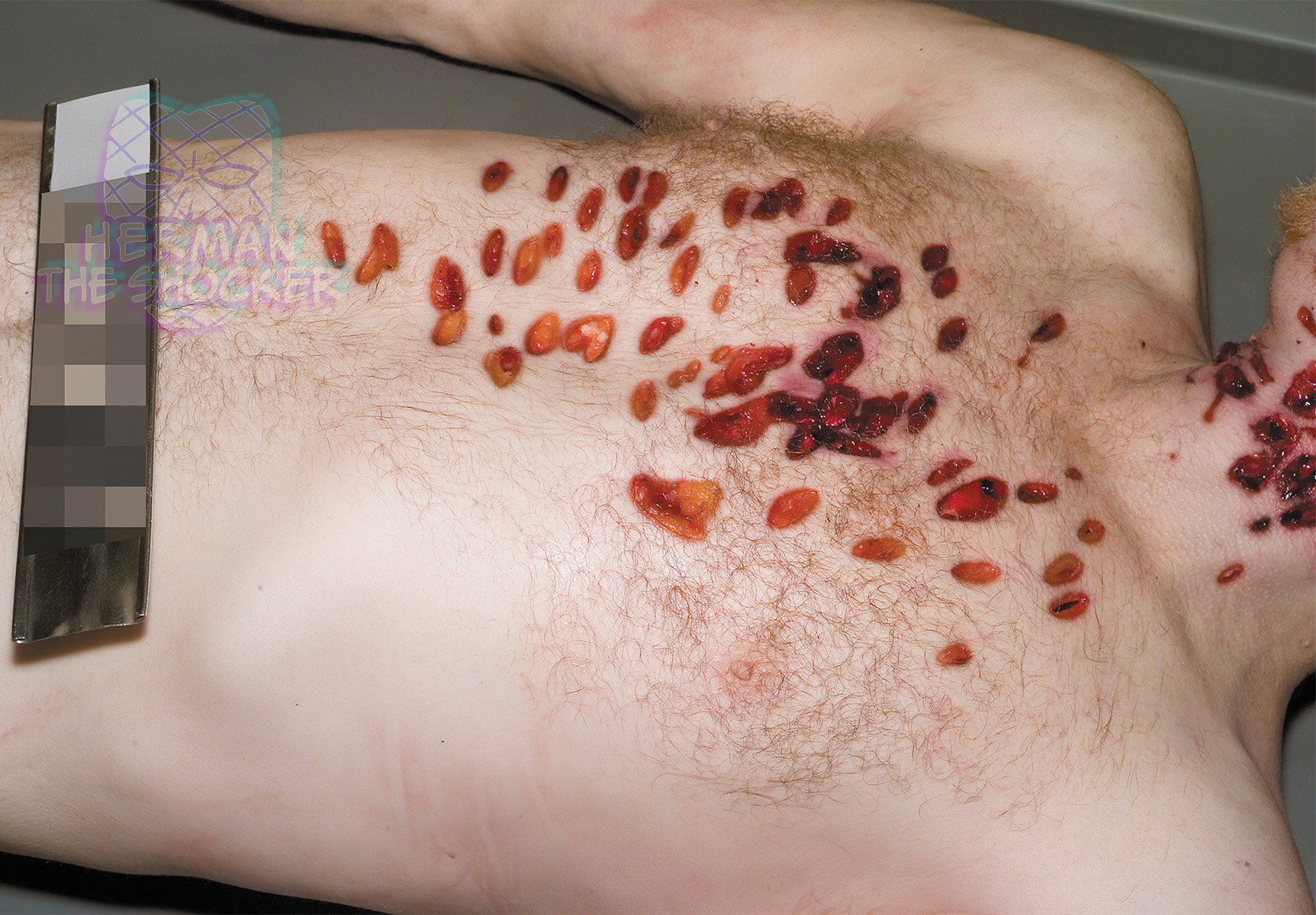This individual has been stabbed multiple times in the chest and abdomen, the body has been washed at the morgue, no further info. Sharp force injuries are caused by objects with sharp or nearly sharp edges or points, including knives, screwdrivers, scissors, ice picks, broken glass, and axes. The wounds they produce typically have smooth distinct edges and vary in shape, including round, linear, curvilinear, gaping, or slit-like. They can be divided into incised wounds (cuts or slashes), stab wounds, or chop wounds.
Stab wounds extend deep into the body and thus are greater in depth than the length on the skin surface, and have a greater propensity to involve injury to the internal organs and blood vessels. The skin has some resistance to penetration, but once breached, especially when the instrument has a very sharp edge, it takes very little perpendicular or obliquely applied force to extend the wound into the underlying tissue and organs, unless bone or cartilage is encountered.
Latest posts








